Website sections:
Current section's content:
- You Can Manage and Program Creativity
- Creative Abilities and Creative Thinking Skills Management
- Briefly About CreativityModel Method Usage
- CreativityModel Method Usage Opportunities and End-User License Agreement
- Current Version of CreativityModel Method
- CreativityModel Method Abstract
- CreativityModel Method Version Changes
- CreativityModel Method Glossary
- Explanation of the Method's Component Parts and How the Component Parts Interact
- Explanation of the Method's Component Parts and How the Component Parts Interact
- Explanation of How the Method's User Achieves Results
- CreativityModel Method - Generate Dots, Connect the Dots
- CreativityModel Method Usage Areas
- The Artist in You
- Growth of the Artist in You
- The Result Getter in You
- Applying the Result Getter in You
- About Choice Supported Creativity Usage
- The Problematic Side of Business Creativity
- Creativity Management and Business Creativity
- Sales CRM Software Development Example
- Why Does Creativity Management Matter and What Can You Do About This?
- Goal Oriented Creativity Management and CreativityModel Method
- Goal Oriented Creativity Management and Your Personal and Professional Life
- Teenager, Version 1 - Confusion
- Teenager, Version 2 - Career Development and Life Management
- Managers, Version 1 - Zigzagging Business Development
- Managers, Version 2 - Innovation Management and New Product and Service Development
- The President, Version 1 - Some of It Did Happen
- The President, Version 2 - Self-Expression, Conflict Resolution, Creativity and Leadership
- CreativityModel Method Development Background
- Further Development of CreativityModel Method

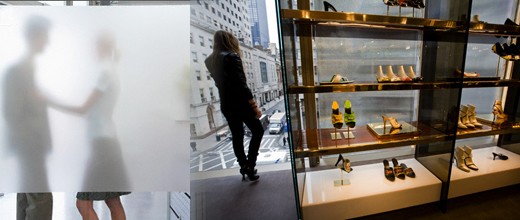

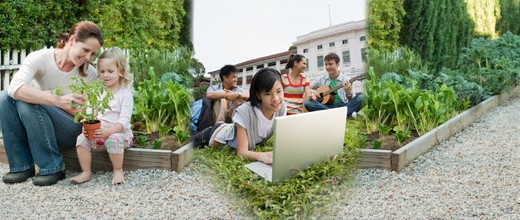
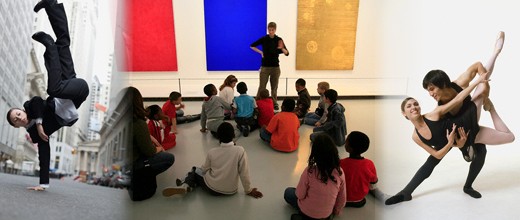
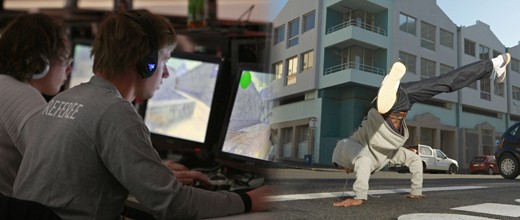
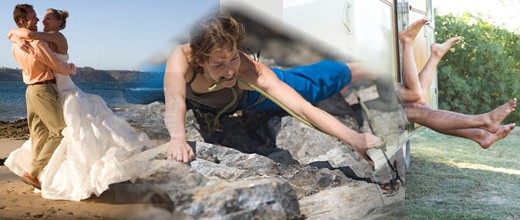


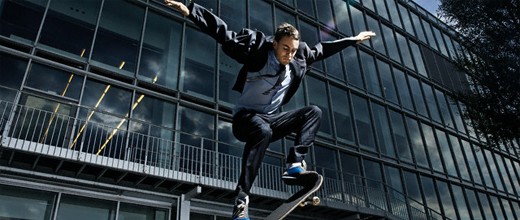

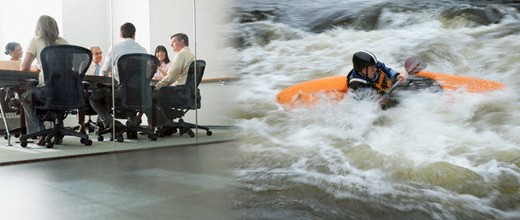
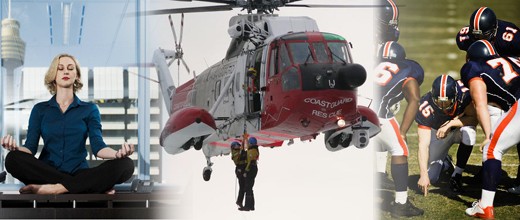





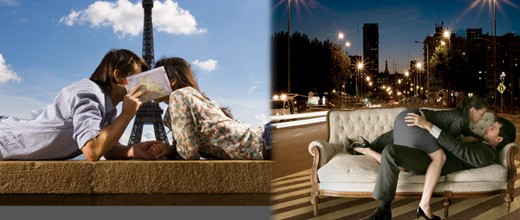
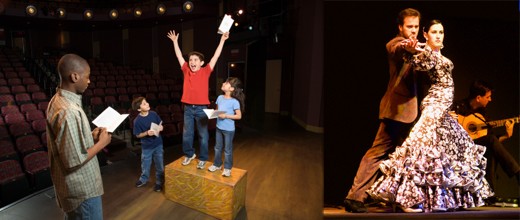
Explanation of the Method's Component Parts and How the Component Parts Interact
Current Version of CreativityModel Method
- CreativityModel Method Abstract
- CreativityModel Method Version Changes
- CreativityModel Method Glossary
- Explanation of the Method's Component Parts and How the Component Parts Interact
- Explanation of How the Method's User Achieves Results
- Usage Opportunities and End-User License Agreement section contains CreativityModel Method usage license information, explanations of how you can use this Method, and a link to a PDF version of this Method that you can save, read offline and distribute, if you wish to do so.
Current Part's Contents
- General Introduction
- CreativityModel Method Usage Related Limitations
- Project Element Creating Principles
- Establishing Project's Theme
- Establishing Project's Goals
- Putting Together Project's Structure
- Structural Storyline Parts Development Principles
- Structural Storyline Completion Requirements
- Creating Project Content Components
- Using Choice Supported Creativity for Component Creating
- Using Choice Supported Structure for Component Creating
- Theme Based Component Creating
- Pooling Based Component Creating
- Characteristic Based Component Creating
- Expressing Yourself Through Development Directions
- Nearly Simultaneous Structure and Component Creating
- Using Goal Oriented Creativity for Component Creating
- Using Goal Oriented Structure for Component Creating
- Using Project Specific Rules for Component Creating
- Components Completion Requirements
General Introduction
Availability of information and ability to compare different alternatives allows to assemble better quality outcomes. However, dealing with large amounts of information and assembly of qualitatively appealing outcomes can be challenging.
Accordingly, a method that helps to develop into a coherent outcome an activity that requires creative development efforts or planning is beneficial in situations, where one or more of the following is true:
- The amount of information is perceived to be large.
- The person working on the project has difficulties with identifying how to start the project, or how to complete the project after it has been started.
- The person working on the project has difficulties with identifying what information to select and what information to discard to complete the project.
- The person working on the project has difficulties with concentrating or memorizing information.
CreativityModel Method usage can be helpful in such situations.
This Method has the following primary component parts:
- Project elements: theme, goals, structure and content components.
- Two project development approaches: Goal Oriented Creative Approach and Choice Supported Creative Approach. Method's users can combine usage of goal oriented or choice supported creativity on as needed bases, but should select one approach as the primary project development approach for the development of the project's structure.
- Project development stages - CreativityModel Method describes the process of developing and completing project elements and connections between and inside the structural elements that form the project's results. This process occurs in stages. The major stages are:
- The Initial Stage
- The Production and Connection Stage
- The Wrap-up Stage
- During these stages project elements can be started, developed further and completed in a flexible manner.
- The stages form a cycle: in the Wrap-up Stage CreativityModel Method user evaluates his or her work and if the results are not satisfactory, can go back to the Initial Stage to improve the outcome. Similarly, the project content's development processes form a cycle that can be completed on the first try, or after several attempts depending largely on CreativityModel Method user's preferences.
This section contains descriptions of project element creating processes, and the Explanation of How the Method's User Achieves Results section contains descriptions of the project development stages.
CreativityModel Method Usage Related Limitations
In CreativityModel Method usage context, creativity is defined as thinking activities and mental processes that are needed for generating qualitatively appealing solutions regardless of the project type. Creativity management is defined as management of creative thinking skills and other mental processes of an individual person or a group of people. That is, creativity management is defined as controlling, arranging and directing usage of the creative thinking skills and other mental processes of an individual person or a group of people.
CreativityModel Method addresses above all creative thinking skills usage. As is mentioned in the Abstract section, creativity is also influenced by abilities, that is, physical and mental capacities (for example, cognitive abilities). Such abilities and their influence on creativity are not being addressed in the current version of CreativityModel Method.
CreativityModel Method usage can help to achieve better quality results effectively and efficiently in countless everyday personal and professional areas of life. This Method can also be used for setting and achieving personal and professional development objectives.
CreativityModel Method usage related aspects can be trained, especially, when training is set up so that different areas receive individual attention on as needed bases. However, certain limitations do apply. Here are couple of principles to keep in mind.
- On one hand, CreativityModel Method can help you to achieve relevant results effectively and efficiently within your individual sets of abilities, experience and expertise, including any relevant technical skills.
- You can push the boundaries through expanding the abilities, experience and expertise, but there are always boundaries.
- CreativityModel Method usage is about producing good quality results within these personal boundaries.
- On the other hand, often it is the case, that it is not so much the potential that a person has, but how he or she uses that potential, that can lead to success in life.
- CreativityModel Method usage is about your getting closer to optimizing the potential that you have at any given point in time.
So, people with very different abilities, experience and expertise levels can use CreativityModel Method successfully.
CreativityModel Method usage is not about instant perfection. In most instances in life, the results don't have to be perfect, to be good. No matter who you are, your results are part of your personal development process, and if they keep getting better, that's also valuable.
Project Element Creating Principles
All CreativityModel Method-based projects should have a theme and/or goals, a structure (that is called structural storyline here), and content (that consist of components).
Components are the project's primary building material that form the project's content. Theme, goals and structural storyline are established to support building the project from the components. Accordingly, explanations of and explicit references to the project's theme, goals, and structural storyline as project content development vehicles can be discarded during the Wrap-up Stage, unless they are relevant to understanding the project.
There is a reciprocal dependency between:
- Theme and/or goals
- Structural storyline
- Components
Each of the elements supports the others and can influence and determine the others. All of the above elements must be in accordance with each other, that is, the elements must fit together. This requirement has to be met for the successful completion of a project. However, which elements fit together and how they fit together is largely a matter of individual preferences.
Project elements can be started and developed further in different sequence. Before the Wrap-up Stage all the project elements must be fully developed so that they can be finalized in the Wrap-up Stage.
A project element can be finalized during the same project development session that it was started. Similarly, an element can be started by identifying just fragments or parts of the element, so that the element is developed further at a later time.
For example, if sentences are used to develop elements, then elements can be built so that initially just a word or abbreviated sentence is being written down as a clue. That clue can be immediately or at some later time developed further in one or more development sessions.
Individual preferences, decision-making abilities and logic fuel the production of the project elements. CreativityModel Method user can create and develop project elements using a combination of two project development approaches: Choice Supported Creative Approach and Goal Oriented Creative Approach. In most instances, choice supported and goal oriented creativity usage can be combined throughout the project. However, one of these two approaches should be selected as the primary project development approach for the development of the project's structure.
Regardless of the approach chosen, every CreativityModel Method user applies his or her own preferences, decision-making abilities and logic, whether correctly or incorrectly, when making decisions and choosing between different alternatives. This process is iterative and can be continuous or discontinuous and can take place at regular or irregular intervals until the project is complete.
Establishing Project's Theme
As part of CreativityModel Method, a project's theme is defined as an outline, category, or synopsis that briefly describes what the project is about. It reflects the project's essence and meaning and, if applicable, also provides a summary of the project's features and benefits.
Accordingly, the person or persons who are responsible for the project's development and management can establish the project's theme by briefly describing, characterizing or categorizing the project. That initial description, outline, category, or summary can be changed during the Initial Stage as necessary, but should be finalized by the end of the Initial Stage.
A project may not have goals, but it should have a theme. If a project does not have clearly and precisely established goals, then at least project's theme should be established so that it reflects project's essence and meaning.
Both project's theme and goals can be used for generating structural parts and content components for the project, for tying together project's content and for eliminating unnecessary components. Theme is more applicable when the Choice Supported Creative Approach is being used and goals are more applicable when the Goal Oriented Creative Approach is being used for the development of the project's structure.
In addition to the entire project, the project's structural storyline parts and even components can also have their own individual themes. Structural storyline parts and components themes must be in accordance with the project's theme and goals. Components should be established and removed in accordance with the project's theme and goals.
A project's theme is complete when it meets the above theme definition and, if the goals are established, is in accordance with the project's goals.
Establishing Project's Goals
Project's goals should reflect what the person or persons who are responsible for the project's development and management want to achieve with the project.
CreativityModel Method does not address the qualities of project's goals like clarity, measurability or achievability. Such material is beyond the scope of this Method.
Both project's theme and goals can be used for generating structural parts and content components for the project, to tie together project's content and to eliminate unnecessary components.
Having goals is usually helpful, but it is not always necessary, for successful completion of a project. Having and using project's theme is more applicable when the Choice Supported Creative Approach is being used, and goals are more applicable when the Goal Oriented Creative Approach is being used for the development of project's structure.
If a project has goals, then the goals should be in accordance with the project's theme, and components should be established and removed in accordance with project's goals and theme.
In addition to the entire project, project's structural storyline parts and even components can also have their own individual goals. Structural storyline parts and the components' goals must be in accordance with the project's theme and goals, and the components' goals (if established) should support their respective parts' theme and goals.
If a project has goals, then the goals should be established and finalized during the Initial Stage.
CreativityModel Method user can write down the project's initial goal or goals and, if necessary, change the project's goals during the Initial Stage. If CreativityModel Method user needs to establish goals or theme, or modify or finalize existing goals or theme during the Production and Connection Stage or Wrap-up Stage, the project development process should be moved back to the Initial Stage.
All project's components should be in accordance with the project's goals. Thus, when goals are changed, at least some of the other elements may need to be changed as well. Altering elements may consume time as well as labor. Because of this, it is advisable to start the project by identifying the initial goals that form a starting point, and thereafter, during the Initial Stage think through the role of the goals, and the goals themselves. CreativityModel Method user should work on goals during the Initial Stage until he or she is certain that the goals do indeed reflect what needs to be achieved with the project.
While having goals is optional to a degree, if anything specific needs to be achieved with the project, it is highly recommended to establish goals for the project in addition to having a theme for the project as well. In most instances, the more clearly and precisely goals are established, the better. On the other hand, a project's theme and goals can be anything CreativityModel Method user wants them to be.
If something specific does need to be achieved with the project, then in the absence of clearly established goals for all practical purposes by default the goal may become "Nothing in particular" or "Don't know." In such instances CreativityModel Method user may develop the project first in one direction and then in another direction and thereafter in a third direction, and so on. As a result, CreativityModel Method user may end up working less productively and may have to dedicate more resources such as labor and time to creating elements and trying out different combinations of elements than would otherwise be necessary. (The same may also apply to other people who are affected by the project.) The quality of the outcome will also most likely suffer because under the time pressure, the only goal may eventually become, "Just get it done!" In the end, the less-than-adequate results will reflect the "nothing in particular" goal that was set by default.
This is especially true for business-oriented and organizational projects - but it does not necessarily hold true for projects where artistic qualities of the outcome matter the most.
Different type of projects ranging from artistic to business projects can benefit from CreativityModel Method usage. In most instances, the more business-oriented and/or organizational by nature the project is, the more important role should goals have in the project development process. Similarly, the more artistic a project is, the more acceptable it is to use choice supported creativity and the relevant trial-and-error approach, while putting very little or no emphasis on establishing and using project's goals. The choice supported creativity usage related trial-and-error approach can produce unexpected, high quality results to which (optionally) meaning can be attributed while the results are being created, or after they have been created. Most business and organizational projects, however, benefit more from goal-oriented approach that helps to prioritizes efficiency and effectiveness.
A project's goals are complete when they reflect what the person or persons who are responsible for the project's development want to achieve with the project, and when the goals are in accordance with the project's theme.
Putting Together Project's Structure
Project's structure is called structural storyline here. Structural storyline consists of parts that together form a broad view of the project. Depending on the nature of the project, these structural parts can be, for example, chapters in a book, sections on a website, acts in a play, a musical phrase or other types of parts of a musical composition, objects on the canvas, a business project's milestones, or main events on a schedule, and so on.
Just like project's content components, structural storyline parts are mental compilations of thoughts that have been put into use in project-specific ways, help to further the project and are related to the actions, tangible objects and intangible subject matters that the project deals with.
However, a structural storyline works like a navigation aid or a map: its purpose is to form a sequence of the main parts or steps that complete the project. So, when finalized, structural storyline "tells the story of the project" in broad terms from the beginning to completion. This principle applies to all types of projects, not only to projects that have an actual written storyline.
Like theme and goals but unlike components (that form the project's content), a structural storyline is primarily a project content development vehicle. After being used during the project development process, an explicitly identified structural storyline may be discarded during the project completion stage, unless the structural storyline is relevant to understanding the project and its content after the project has been completed.
A structural storyline can be as simple or as complex as needed. The longer and more complex the project is, the more important the structural storyline becomes and the more important it is to establish theme and goals for structural storyline individual parts.
It is up to CreativityModel Method user to decide whether or not structural storyline parts should be explicitly identified, and how elaborate the structural storyline parts should be. If the CreativityModel Method user does not have any problems with identifying the project's content components and arranging the components as is necessary for project completion, explicit identification of the project's structural parts may be not necessary, especially if there is no need for having an explicitly identified project structure available after the project has been completed. Of course, the project will still have a structure in this case, but the structural storyline parts will simply not be explicitly identified. Nevertheless, if the CreativityModel Method user has trouble with assembling the project's content (that is, the project's components), for project development purposes explicit identification of the structural storyline parts is highly recommended. Further, having an explicitly identified structural storyline can help to increase project's adherence to its goals and/or theme.
So, a well-planned project structure helps to develop project's content, and to increases efficiency and the probability that the desired results are achieved.
Structural Storyline Parts Development Principles
Structural storyline should be developed so that its parts are in accordance with the project's goals and theme and it helps to complete the project in accordance with the project type. In most instances, therefore, the structural storyline reflects or is at least influenced by the project's type and the relevant rules. For example, depending on the project's type, a structural storyline may contain the project's schedule.
In addition to the project's theme and goals, structural storyline individual parts may have their own themes and goals. The latter, if established, must be in accordance with and help to further the project's theme and goals.
Structural storyline parts' creating processes are similar to the components creating processes and, as applicable, are based on usage of combinations of choice supported and goal oriented creativity. That is, project's structure can be developed by combining, as applicable, from start to completion forward moving, and from the goals toward the project starting point backward moving project development approaches.
Similarly to component creating process, pooling can be used for generating project's structural parts. Pooled elements can be arranged in accordance with the project's theme and/or goals. Some such elements may become structural storyline parts, others may become components, and yet others may be discarded entirely, because they do not fit together with the project's theme and/or goals.
Project's structural parts can also be generated in a goal oriented manner, by bridging gaps between the existing structural parts. Project end point and the starting point can form the first structural parts in this process. That is, in this process, the first structural parts can be put together based on project goals as the project completion point, and the project starting point. The rest of the structural parts are generated by moving back from the goals to the starting point, so that the resulting structural parts form an effective sequence in both ways: for project development purposes from completion to the starting point, and, for the actual project implementation purposes, from start to finish.
Creating Project's Content Components subsection provides additional information on project content component creating processes that are also relevant to structural storyline parts development.
Choice Supported Creative Approach subsection provides more information on pooling, and Goal Oriented Creative Approach subsection on goal oriented project development approach.
Project Development Stages subsections address stage-by-stage project development principles.
Structural Storyline Completion Requirements
Once identified and finalized, each structural storyline individual part:
- Must help to further the project's goals and theme and, if established, the part's own goals and theme.
- Should be built so that it can be connected with the next part (if there is one) without creating or leaving gaps, inconsistencies, or contradictions in the project.
- Should be built so that it cannot be removed without creating gaps, inconsistencies or contradictions in the project.
If any of the above criteria are not met, the part does not belong in the project.
CreativityModel Method user determines whether or not any gaps, inconsistencies or contradictions exist in his or her opinion. Additionally, every person who in any way evaluates the project may also determine whether or not any gaps, inconsistencies or contradictions exist in his or her opinion.
Accordingly, a project's structural storyline is complete when CreativityModel Method user, after evaluating the structural storyline believes that:
- All of its parts help to further the project's theme and goals.
- All of its parts (except the last part) can be connected to the next part without gaps, inconsistencies or contradictions in the project.
- None of the parts can be removed without creating gaps, inconsistencies or contradictions in the project.
Creating Project Content Components
Components are parts or portions of project's structure and, thus, also project's content. Project's goals, theme and structure are all established for supporting the project content development processes. In a reciprocal manner, project content components should support the project's goals, theme and structure. That is the purpose of having the content.
Components creating process is similar to structural storyline parts creating process. So, most of the information presented in this subsection applies to structural storyline parts as well.
Below is an overview of different component generating and development principles and techniques. Which principles are best suited for your project depends on the creativity approach that you are using for the development of the project's structure. However, choice supported and goal oriented creativity can also be used in combinations. Choice supported creativity can be used within goal oriented structure, and vice versa. Similarly, you can use the component generating and development principles described here in different combinations as well.
Using Choice Supported Creativity for Component Creating
Choice supported creativity is explained in the subsection Choice Supported Creative Approach. This subsection contains component creating related information.
Choice supported creativity offers a lot of freedom of movement, but with this freedom comes also the responsibility to express yourself and to make choices that support the formation of the project's outcome. The less you want to - or should - express yourself, the more helpful you may find usage of goal oriented creativity, instead of choice supported creativity.
However, some choice supported creativity related techniques listed here can also be implemented in a structured and less expressive manner, while others both offer more flexibility and require more choices to be made in return.
Using Choice Supported Structure for Component Creating
Using choice supported creativity, you can work in somewhat mechanical manner - if you prefer to do so - by putting together the project's structure and then filling it with the content components.
That is, based on the project's theme you can put together the project's structure and then add components so, that the outcome is coherent and meets any other necessary criteria.
Putting together the project's structure creates gaps between the structural parts.
The smaller are the gaps between the initially established structural parts, the more similarities the component adding process has to goal oriented creativity usage, if you want to keep the initially established structure in place.
The bigger are the gaps between the initially established structural parts, the more flexibility you have with the component creating process.
As needed, you can change or re-order the initially established structural parts while you work on the components, unless the established structural parts or their order is necessary for meeting project-specific rules or requirements.
Theme Based Component Creating
When you use choice based creativity and add components, you probably want to keep in mind the project's theme. That helps to generate project-related content. Further, if the structural parts have their own themes, you may want to keep in mind the themes of the structural parts where the components belong to, or should belong to. Doing so helps to generate coherent outcomes.
Project's theme can be used for generating structural parts and content components for the project, for ordering and tying together project's content and for eliminating unnecessary components.
Pooling Based Component Creating
Pooling is about generating alternatives, so that you can compare them and choose the best solutions. In many instances pooling can - and should - be used together with goal oriented creativity as well. However, choice based creativity leaves more room for flexibility that can make pooling effective.
When you use a computer and suitable software, during a pooling process you can start with fragments, which can be scattered. Next, develop further and organize the fragments, so that you can use them as needed.
During pooling you can generate alternative components spontaneously - whatever comes to mind is right. You can follow any thought processes or ideas and try out different scenarios and possibilities. There are no wrong ideas during the pooling process. The selection process comes later, and theme and goals help to select the most suitable alternatives.
You can also proceed in a more systematic manner.
For example, when writing something, and even for other types of projects, structural storyline parts and components can also be pooled by going from verbs to nouns to adjectives (characteristics), to other nouns related by the characteristics, and so on. Further, usage of similarities and contrast, synonyms and antonyms, and antonyms of the antonyms (opposites of the opposites), can also expand the number and other qualities of the pooled components.
Another source of ideas involves finding answers to questions including who, what, when, where, how, and why.
Structural storyline parts and components are related to actions, tangible objects and intangible subject matters that the project deals with. The above questions (who, what, when, where, how, why) help to discover these actions, tangible objects and intangible subject matters and their characteristics. Actions are identifiable by verbs used; objects and subject matters are identifiable by nouns used; and characteristics are identifiable by words that qualify the actions, objects, and subject matters.
Listing the actions, tangible objects, and intangible subject matters and their characteristics helps to generate an unorganized pool of structural storyline parts and components. Using the theme and goals, the storyline parts and components can then be organized and ordered for successful completion of the project.
Characteristic Based Component Creating
Characteristic based component creating is the most flexible and imaginative version of the choice supported creativity usage options described here. This technique can be used for both new component and structural part creating, and existing component and structural part development purposes.
Expressing Yourself Through Development Directions
A component can be started as a fragment, which can represent one particular feature or one or more parts of a feature. That fragment can be developed further by working on the features of the component.
In the process, as CreativityModel Method user, you can stress above all these features of the component that characterize and help to express your views of the component, that is, are most important in your opinion.
This way, you can develop components in any direction you want.
Characteristic, here, is anything that can be used to describe the component in a perceivable manner.
Thus, among others, if there are any actions that are related to a component, these actions are its characteristics as well, just like other features are.
Similarly, when you add components, you can develop the project's content in any direction that you want through expressing yourself.
Along the way, pretty much any kind of twist or turn is acceptable - as long as you find it acceptable.
In this process, in addition to your experiences and expertise levels, your passion for the subject matters that you work with, your actual real need to express yourself, your ability and willingness to empathize, observation of details, your views, beliefs, values, feelings and emotions, assumptions, perceptions, expectations, taste and even habits all affect your reasoning and the choices that you make, which in turn affect the outcome.
Nearly Simultaneous Structure and Component Creating
Unlike usage of structure for component creating, that is described above (under Using Choice Supported Structure for Component Creating), when characteristic based component creating technique is used, project's structure can be established nearly simultaneously with the components, so that the structure becomes apparent only after the project has been completed. That is, project's structure can be, but doesn't necessarily have to be, established before the structure is filled with the components. Structure can also be established dynamically, thinking ahead just couple of steps at the time, and completing the structure with components at the same time.
To put it differently, when you use characteristic based component creating technique, during the project development process you may not know where the project is going and what the end result of it will be like.
This technique requires more skills and well made choices than do other alternatives that are described above. Wrong choices may render the results too "flat," that is, one or two-dimensional, instead of being realistic, or too abstract, incoherent and difficult to follow. That, in turn, is likely to limit the amount of people who will like the end result.
However, if you also have the needed expertise and master the technical side of the project-specific requirements (whatever they are), characteristic based component creating processes can provide excellent means for expressing yourself.
So, the more you want to communicate something specific, identifiable and understandable with your work, the more careful you may want to be with the usage of characteristic based component creating technique.
The more you simply want to express yourself and, perhaps, release your feelings in the process, the more freely you may want to use characteristic based component creating technique.
Using Goal Oriented Creativity for Component Creating
Goal oriented creativity is explained in the subsection Goal Oriented Creative Approach. This subsection contains component creating related information.
Goal oriented creativity is about focusing on the objectives every step of the way, and about making sure that the priorities are clarified and followed. "What do we need to achieve here?" is the main question and answers to that question help to generate both project's structure and content components.
Using Goal Oriented Structure for Component Creating
In most cases goal oriented creativity necessitates that individual structural parts have their own goals, that lead to achievement of the project's goals.
When you use choice based creativity, you can generate both structural parts and components in a random order and use the project's theme for ordering the elements.
When you use goal oriented creativity, it is advisable to generate components within the goal oriented structure, so that an existing component determines the one before it. Otherwise, risk of going astray increases.
For example, goals, as project's completion point, determine the component that precedes the goals. Whatever comes right before achieving the goals and is necessary for achievement of the goals, is the previous component. Other components are established in the similar manner.
This process is very focused on goals, one step at the time. However, the more clearly it is specified what needs to be achieved, without limiting the options that can be used for achievement of goals, the more flexibility and alternative options for achievement of goals can be considered. Nevertheless, in some instances how the goals can and cannot be achieved has to be determined as well (on moral grounds, for example, or for side effects related risk reduction purposes).
Research, project related experience and expertise, understanding of the relevant subject matters and empathy are important here.
Pooling can also be used for generating components. Similarly, project's theme can help generate alternative components.
Project participants can use the techniques listed in the subsection Using Choice Supported Creativity for Component Creating. However, every step of the way, the results should lead to achievement of the necessary goals.
Using Project Specific Rules for Component Creating
Project specific rules may impose requirements. Make sure that you have satisfied these requirements by creating components that reflect and satisfy these requirements, and also are related to project's theme and structure. As applicable, use pooling. You can start with fragments and develop further into components the most promising ones.
Exploration of requirements can also provide ideas for project development. For example, if something cannot be done, then what substitutes it, allowing to create the same outcome? What complements the substitutes? If something must be done, how can it be best related to the project's theme?
Components Completion Requirements
In addition to the project's theme and goals and the structural storyline parts' theme and goals, individual components can have their own theme and goals as well. The latter, if established, must be in accordance with and help to further that storyline part's theme and goals that the component is part of.
Components and structural storyline parts evaluation principles are similar. Every component, once finalized:
- Must help to further that structural storyline part's goals and theme that the component is part of
- Should be built so that it can be connected with the next component (if there is one) without creating or leaving gaps, inconsistencies, or contradictions in the project
- Should be built so that it cannot be removed without creating gaps, inconsistencies, or contradictions in the project
CreativityModel Method user determines whether or not any gaps, inconsistencies, or contradictions exist. Additionally, every person who evaluates the project may also determine whether or not any gaps, inconsistencies, or contradictions exist.
CreativityModel Method-based project development stages form a cycle. In the Wrap-up Stage CreativityModel Method user evaluates his or her work. If the results are not satisfactory, CreativityModel Method user can go back to the Initial Stage to improve the outcome. Similarly, the development of the project's components (that is, a project's content development) is a cyclical process that can be completed on the first try or after several attempts, largely depending on CreativityModel Method user's needs and preferences.

